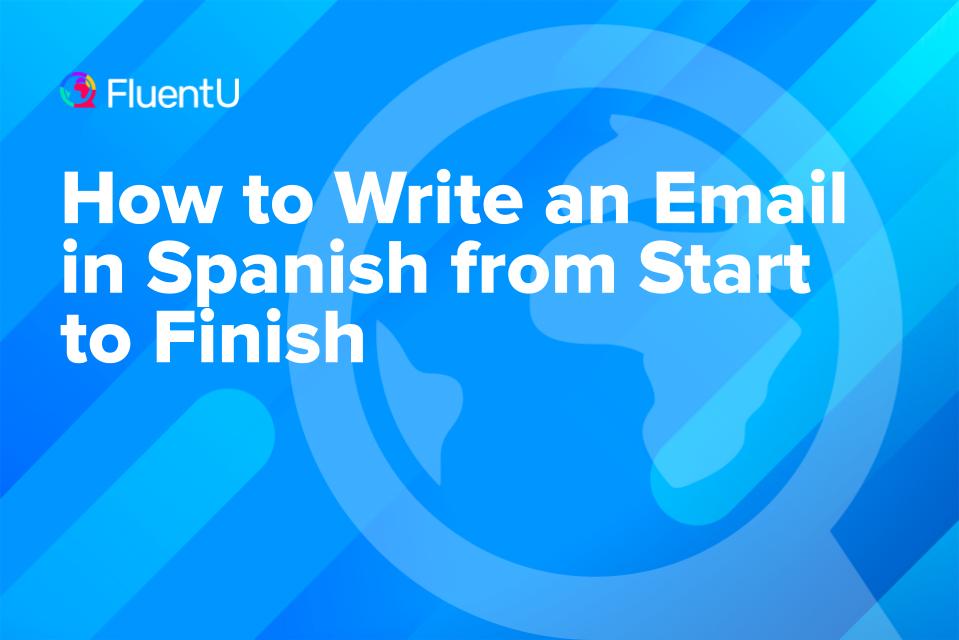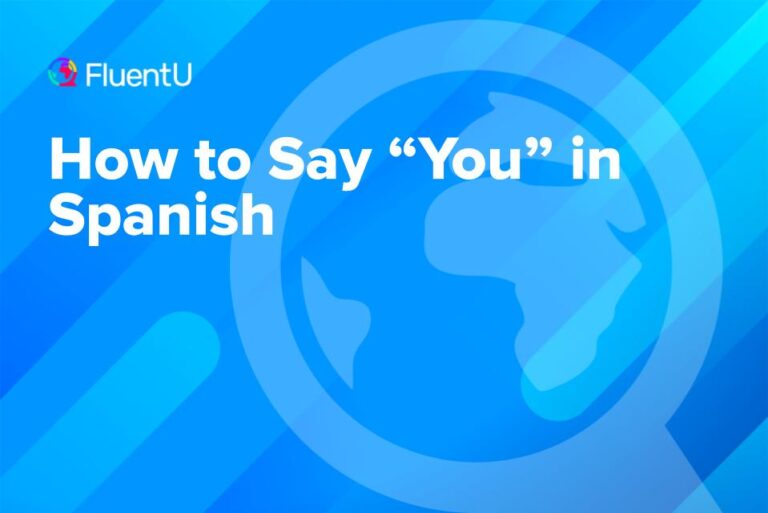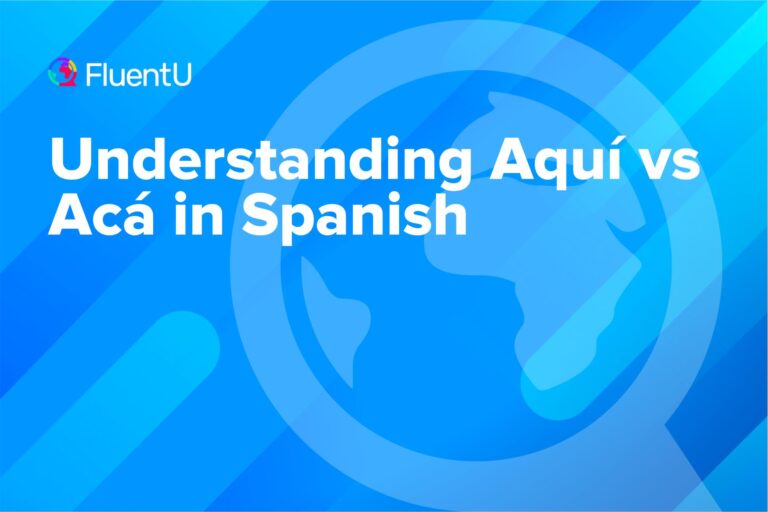Contents
- Greetings for Formal Emails in Spanish
- Expressing the Reason for Your Email in Spanish
- The Body of a Formal Email in Spanish
- How to End a Formal Email in Spanish
- How to Apply for a Job Through Email in Spanish
- How to Make an Inquiry in a Spanish Email
- How to Send or Accept Invitations in Spanish Emails
- Why Learn to Write Formal Emails in Spanish
- And One More Thing…
How to Write an Email in Spanish from Start to Finish

Writing in Spanish tends to slip through the cracks when studying the language. It’s not just about writing emails, either—there’s a whole world of Spanish text slang to get your head around, which will help you communicate well with friends and acquaintances on a daily basis.
While slang is what you’ll need to get chatting with your buds on Facebook or Twitter, what do you do when you have to write a formal email to someone you don’t know? Let’s look at how to write a formal email in Spanish, plus how to personalize your email for different situations.
Download: This blog post is available as a convenient and portable PDF that you can take anywhere. Click here to get a copy. (Download)
Greetings for Formal Emails in Spanish
If you don’t know the name of the person you’re writing to, you should start your letter with:
A quien corresponda:
(To whom it may concern:)
If you know the name but still don’t have enough of a relationship to use the their first name (i.e., it’s probably the first time you’re writing to this person), you can say:
Estimada/o + the person’s title and surname
Estimada/o means “esteemed.”
For example:
Estimado Señor Pérez (Esteemed Mr. Pérez)
Estimada Señora Pérez (Esteemed Mrs. Pérez)
Note that you need to change the last letter of estimado according to whether you’re writing to a man or woman.
Another thing to remember is that after the name, you need a colon instead of the comma used in English.
For example:
Estimado Señor Pérez:
Also useful to know is that sometimes Señor, Señora and Señorita are abbreviated to Sr., Sra. and Srta., respectively.
Doctor abbreviated would be Dr. for a man, but you’ll use Dra. for the female Doctora.
Once you’ve established a relationship with someone but still want to keep things quite formal, you can start your letter with querido/querida (Dear) and the person’s first name.
For example, you may begin with something like:
Querido José:
(Dear José:)
Expressing the Reason for Your Email in Spanish
Once you’ve gotten past saying hello, you’ll need to explain who you are and why you’re writing.
You can continue with:
Mi nombre es____.
(My name is____.)
You should write your full name here.
You might also add something about your position or the organization you’re working for.
For example, if you were a teacher writing to a parent you haven’t yet met, you might say:
Mi nombre es Claire Stone y soy la profesora de su hijo John.
(My name is Claire Stone and I’m your son John’s teacher.)
If you’re writing on behalf of an organization or another person, you could say:
Escribo de parte de____.
(I’m writing on behalf of____.)
You need to also explain why you’re writing your email.
So, you could say something like:
Le escribo para organizar una reunion para hablar sobre John.
(I’m writing to organize a meeting so that we can talk about John).
Poor John. It sounds like he’s in trouble.
The Body of a Formal Email in Spanish
Now that you’ve introduced yourself and said why you’re writing, you’ll need to write your email’s body.
This part varies greatly depending on what your email is about, but here are some guidelines to help you keep your writing formal:
- Use formal language and structures. Writing formally means using Spanish conditionals, especially to ask questions and make requests. For example:
Quería saber si ustedes estarían disponibles para hablar el miércoles.
(I wanted to know if you would be available to talk on Wednesday).
- Don’t use slang. Avoid the use of slang, idioms or abbreviations. FYI (PTI, para tu información), emoticons and text speak—such as PQ instead of porque—are definitely not appropriate in a formal email. LOL.
- Use the formal “you.” Use usted or ustedes to address your reader. You might adopt a more informal tone after one or two emails, but it’s best to keep things formal at the beginning and follow the example of the person writing to you.
How to End a Formal Email in Spanish
End your email with a finishing sentence. This might be something like:
Cualquier cosa estoy a su disposición.
(I am available should you have any questions.)
Espero su respuesta.
(I await your reply.)
You should then end with a final greeting, such as:
Saludos
(Greetings)
Saludos cordiales/Un saludo cordial
(Cordial greetings—this is more formal than Saludos)
Le saludo atentamente
(I attentively send greetings—this is even more formal)
Muchas gracias por su ayuda/tiempo
(Thank you for your help/time)
Gracias y saludos
(Thank you and greetings)
How to Apply for a Job Through Email in Spanish
Writing to apply for a job? Pepper your Spanish email with these phrases:
Quisiera postularme para el puesto de_____anunciado en_____el día_____.
(I wanted to apply for the post of_____, advertised in_____on [date].)
Actualmente estoy trabajando para_____y mis responsabilidades incluyen_____.
(At the moment I’m working for_____and my responsibilities include_____.)
Tengo experiencia con_____.
(I have experience with_____.)
Como pueden ver en mi currículum, mi experiencia y capacidades encajan con los requisitos de este puesto.
(As you can see from my resume, my experience and skills fit the requisites for this job.)
Me gustaría saber más sobre el puesto, en particular_____.
(I would like to know more about the position, in particular_____.)
How to Make an Inquiry in a Spanish Email
Seen something you want to know more about? Include these phrases in your email:
Me interesa mucho_____y quisiera saber más sobre_____.
(I’m very interested in_____and I would like to know more about_____.)
¿Podría darme más información sobre_____?
(Could you give me some more information about_____?)
Quería saber los horarios y los costos del_____.
(I would like to know the timetable and cost of_____.)
How to Send or Accept Invitations in Spanish Emails
Want to invite someone to a formal event or accept their invitation? Try these:
Queremos invitarle formalmente a formar parte de nuestro evento_____que se llevará a cabo el día_____a las_____.
(We would like to formally invite you to take part in our event_____, which will take place on_____at_____.)
Muchas gracias por su invitación. Estaré encantada de asistir.
(Thank you for your invitation. I will attend with pleasure.)
Estoy muy agradecida pero lamentablemente no voy a poder asistir debido a_____.
(I thank you for your invitation, but unfortunately, I will not be able to attend due to_____.)
Why Learn to Write Formal Emails in Spanish
Learning how to write formal emails in Spanish is an incredibly useful skill. Here’s why:
- You never know when you might need it. Who knows when you’ll need to write to someone you don’t know? When you do send that email, you’ll want to get the tone right so whoever receives it won’t be put off about corresponding with you.
- It can help you get a job. What if one day you find the job of your dreams…in Spanish? You’ll need to write a formal letter to apply for it, and you may even need to translate your CV into Spanish.
- It might help you keep the job you’ve already got. If you’ve already got a job where you need to speak Spanish, some degree of writing will likely be involved. Learning how to address your colleagues appropriately, make requests and ask polite questions could be the thing that keeps you employed.
- You don’t want to sound rude. Nothing is worse than messing up something important just because you worded a phrase incorrectly, like calling someone querido instead of estimado.
- Writing can help consolidate the Spanish you’ve already learned. Seeing the Spanish you’ve mastered on paper is a great way to solidify and review what you’ve already learned.
So there you have it. Now you’ve got no excuses to not reply to that email you just received! Or to apply for that job!
But don’t forget to keep practicing your general Spanish writing and conversation skills.
This will make your messages sound more authentic—just because something is formal doesn’t mean it has to be painfully dry.
So get exposure to real Spanish through native speakers or media like books or videos. There are also multimedia language learning tools that can improve your written Spanish.
One resource is FluentU, which has Spanish videos equipped with subtitles and other tools that teach words and their usage in context.
FluentU takes authentic videos—like music videos, movie trailers, news and inspiring talks—and turns them into personalized language learning lessons.
You can try FluentU for free for 2 weeks. Check out the website or download the iOS app or Android app.
P.S. Click here to take advantage of our current sale! (Expires at the end of this month)

Soon enough, you’ll be able to easily tackle written Spanish correspondence, and your responses will ooze grace and politeness.
Saludos cordiales,
FluentU
Download: This blog post is available as a convenient and portable PDF that you can take anywhere. Click here to get a copy. (Download)
And One More Thing…
If you've made it this far that means you probably enjoy learning Spanish with engaging material and will then love FluentU.
Other sites use scripted content. FluentU uses a natural approach that helps you ease into the Spanish language and culture over time. You’ll learn Spanish as it’s actually spoken by real people.
FluentU has a wide variety of videos, as you can see here:

FluentU brings native videos within reach with interactive transcripts. You can tap on any word to look it up instantly. Every definition has examples that have been written to help you understand how the word is used. If you see an interesting word you don’t know, you can add it to a vocab list.

Review a complete interactive transcript under the Dialogue tab, and find words and phrases listed under Vocab.

Learn all the vocabulary in any video with FluentU’s robust learning engine. Swipe left or right to see more examples of the word you’re on.

The best part is that FluentU keeps track of the vocabulary that you’re learning, and gives you extra practice with difficult words. It'll even remind you when it’s time to review what you’ve learned. Every learner has a truly personalized experience, even if they’re learning with the same video.
Start using the FluentU website on your computer or tablet or, better yet, download the FluentU app from the iTunes or Google Play store. Click here to take advantage of our current sale! (Expires at the end of this month.)







